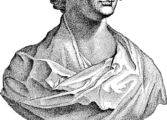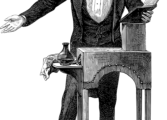Jane Austen: A Literary Icon of the Regency Era

Introduction:
Jane Austen, a name that has become synonymous with wit, romance, and social commentary, is one of the most celebrated authors in English literature. Her novels, set in the Regency era, continue to captivate readers even after more than two centuries. In this article, we will delve into the life and works of Jane Austen, exploring her literary contributions, the historical context in which she wrote, and her enduring legacy.
I. Jane Austen: A Brief Overview

– Early Life and Background: Born in 1775 in Steventon, Hampshire, Austen was the seventh of eight children. She hailed from a modest family with a passion for literature and cultivated her love for writing from a young age.
– Writing Style and Themes: Austen’s narratives revolve around the social confines of Georgian society, drawing on her keen observations of relationships, marriages, and the position of women. With her razor-sharp irony and satirical wit, she masterfully dissected the follies and foibles of her contemporary society.
– Key Works: Austen is best known for her six completed novels, including “Pride and Prejudice,” “Sense and Sensibility,” “Emma,” and “Mansfield Park.” Each novel showcases her sharp characterizations, intricate plots, and insightful commentaries on love, marriage, and social hierarchies.
II. The Evolution of Jane Austen’s Legacy
– Initial Reception: During Austen’s lifetime, her novels were published anonymously, and their reception varied. While some critics appreciated her wit and keen observations, others dismissed her works as mere domestic tales.
– Increased Popularity: It was not until the 19th century, when her novels gained wider recognition, that Austen’s genius was truly acknowledged. The publication of a biography by her nephew, James Edward Austen-Leigh, in 1870 solidified her reputation as a talented author.
– Adaptations and Cultural Influence: Austen’s novels have been adapted into numerous films, television series, and stage productions, further expanding her reach and popularity. Her timeless stories continue to resonate with audiences worldwide, making her an enduring cultural icon.
– Academic Interest and Literary Analysis: The past few decades have seen a surge in scholarly interest in Austen’s work. Academics have analyzed her novels from diverse angles, delving into themes of gender, class, and societal norms. Her novels are now studied in literature courses globally.
III. Jane Austen’s Enduring Influence
– Societal Impact: Austen’s novels shed light on the reality of women’s limited options in Georgian society, paving the way for discussions on women’s rights and societal norms. Her heroines, with their wit and intelligence, challenged conventional notions of femininity.
– Feminist Readings: Feminist scholars have noted Austen’s subtle critique of patriarchal systems and her championing of female independence within the constraints of society. Her novels continue to inspire discussions on gender roles and the pursuit of personal happiness.
– Cultural Resonance: Austen’s work transcends time and space, appealing to readers across generations and cultures. Her vivid characters, timeless themes, and skillful storytelling ensure her place in the literary canon.
– Tourism and Literary Pilgrimage: The enduring popularity of Austen’s novels has given rise to literary tourism, with visitors flocking to historic sites associated with her life and works, such as Chawton House and the Jane Austen Centre in England.
IV.
: A Glimpse into Jane Austen’s World
– [Please insert an engaging video here to provide viewers with a visual glimpse into Jane Austen’s world, showcasing significant locations, artifacts, and insights into her life and times.]
In conclusion, Jane Austen, with her perceptive observations and exquisite storytelling, remains an influential figure in the world of literature. Her novels continue to be cherished for their timeless themes, insightful social commentary, and memorable characters. Austen’s legacy as a literary icon of the Regency era endures, and her works will undoubtedly continue to enchant generations to come.
References:
– Austen-Leigh, J. E. (1870). “A Memoir of Jane Austen.” James Edward Austen-Leigh.
– “Jane Austen.” The British Library, www.bl.uk/people/jane-austen.
– “Jane Austen’s House Museum.” www.jane-austens.house.
















































